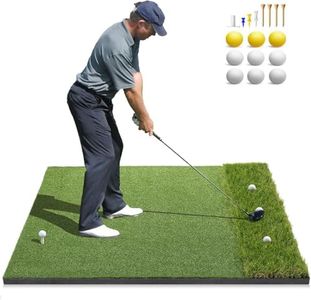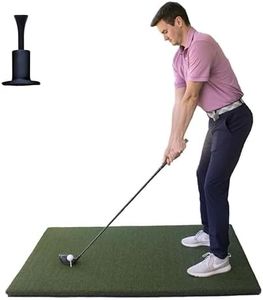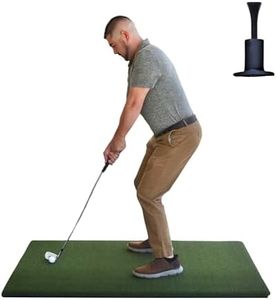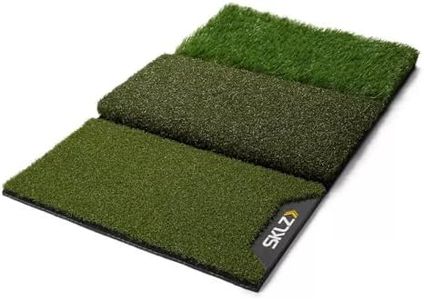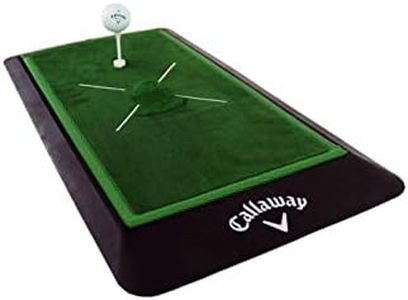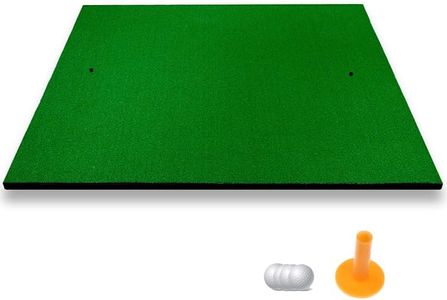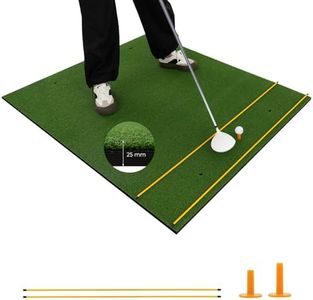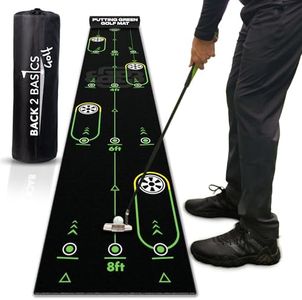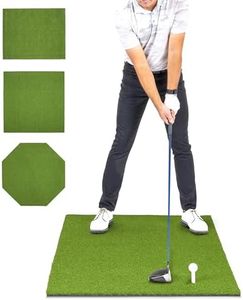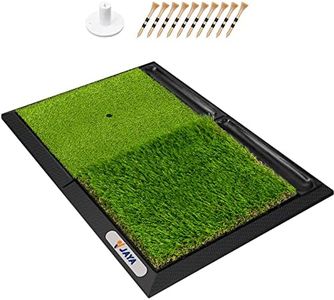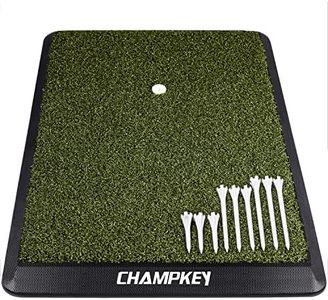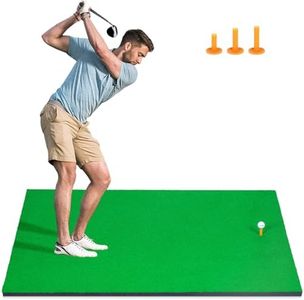We Use CookiesWe use cookies to enhance the security, performance,
functionality and for analytical and promotional activities. By continuing to browse this site you
are agreeing to our privacy policy
10 Best Golf Hitting Mats
From leading brands and best sellers available on the web.Buying Guide for the Best Golf Hitting Mats
Choosing the right golf-hitting mat is essential for golfers who want to practice effectively at home or at a range. A good mat can mimic the feel of actual turf, protect your clubs, and provide a comfortable practice experience. When selecting a golf-hitting mat, it's important to consider factors such as size, material, thickness, stability, and features that suit your needs. Thinking about where you'll use the mat, how often you'll practice, and what kind of feedback you want from your shots can help you identify the best fit for your practice routine.Mat SizeMat size refers to the length and width of the hitting surface. This is important because a larger mat gives you more room to move, set up different shots, or practice with various clubs without stepping off the mat. Mat sizes generally range from compact models (about 1.5 by 2 feet) through medium sizes (around 3 by 5 feet) to larger formats (up to 5 by 5 feet or more). Compact mats are easy to store and move but restrict shot angles. Medium mats are a good choice for most home users, allowing full swings while saving space. Larger mats are ideal for those who want to practice footwork or emulate a driving range feel. Think about your available space and how you'd like to practice when picking the size.
Surface MaterialSurface material is the top layer where the club strikes the mat, and it greatly affects your practice experience and club protection. The most common materials are synthetic turf (mimicking fairway grass) and sometimes denser fibers for rough or tee areas. Softer surfaces can feel more realistic and are easier on clubs and joints, but may wear faster. Firmer surfaces last longer but may feel less like real grass. If you want a closer simulation of real turf, choose a mat with a realistic, slightly cushioned surface. For heavy use, look for durable materials that can withstand repeated hits.
Mat ThicknessMat thickness measures how much cushioning is provided under the hitting surface. Thicker mats (usually over 1 inch) offer more protection for your joints and golf clubs by absorbing impact, which is especially important for frequent practice. Medium-thickness mats (around 0.5–1 inch) can balance comfort and portability, while very thin mats may be less comfortable and can lead to wrist or elbow strain over time. If you’re planning long practice sessions or have a sensitive body, opt for a thicker mat. For occasional or casual use, a thinner mat may suffice.
Stability and Slip ResistanceStability refers to how securely the mat stays in place during use. Mats with non-slip backing stay put during swings and provide a safer practice environment. Some may have additional weight or textured bottoms to improve grip on different floor types. Lightweight mats may slide around more, especially on smooth surfaces. If you plan to use your hitting mat indoors on tile or hardwood, or outside on concrete, choose one with a good anti-slip base. If you use it on grass or carpet, stability is still helpful, but less critical.
Tee Placement OptionsMany golf-hitting mats include spots or holes for placing tees, or come with rubber tees. This feature allows you to practice drives as well as iron shots. Some mats allow adjustable tee height for different clubs, while others may only support irons. If your practice involves working on your driving, pick a mat that has flexible tee placement or comes with tee holders. For strictly iron practice, this is less important.
Portability and StoragePortability refers to how easy it is to move, roll, or store the mat when not in use. Lightweight mats are easier to carry and can be stored in small spaces, while bulkier mats may need a designated area to remain set up. If you want to practice in various locations or need to pack your mat away after each use, consider a model that is easy to transport and store. Otherwise, stability and features may be prioritized over portability.
